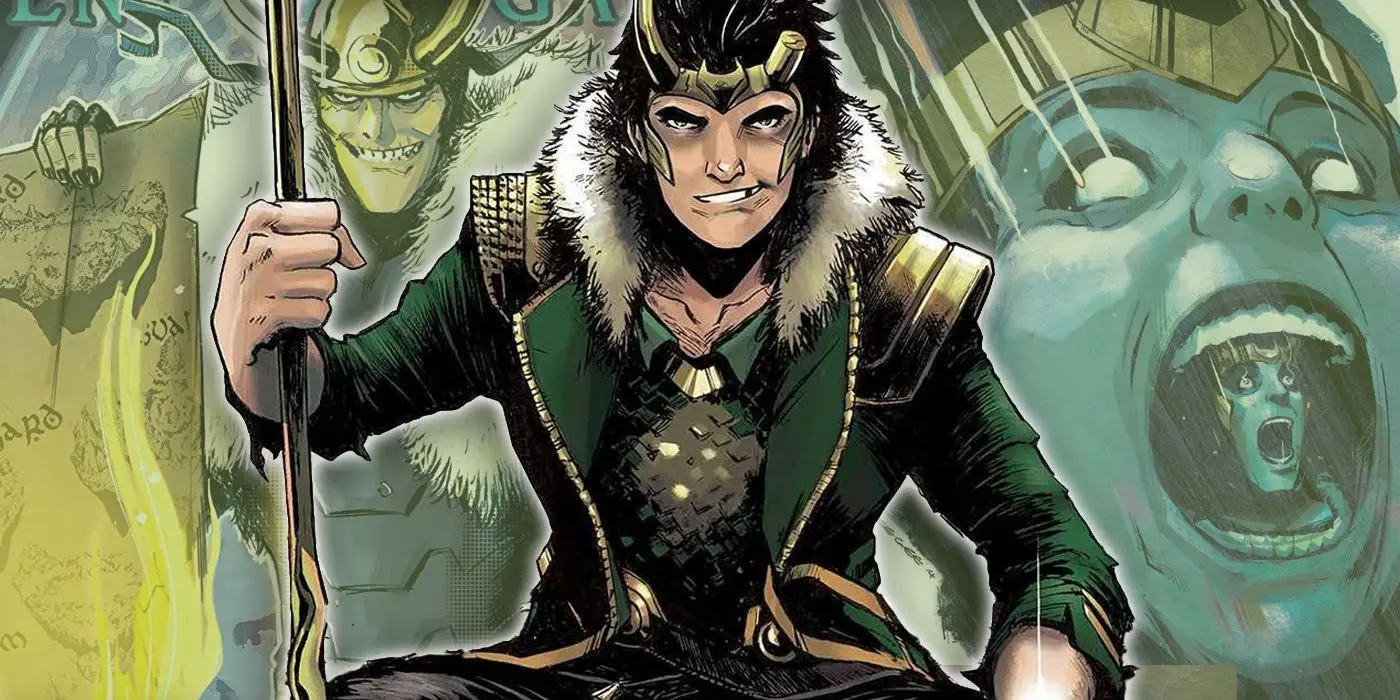Loki Reading Order Guide – Marvel’s God of Mischief Unleashed
Who is Loki? The Trickster’s Mythological and Marvel Origins
Loki Laufeyson, the God of Mischief, is one of Marvel’s most iconic and enduringly complex characters. Inspired by Norse mythology, he debuted in Journey into Mystery #85 (1962) as a recurring adversary to his adoptive brother, Thor. Created by Stan Lee, Larry Lieber, and Jack Kirby, Loki’s origins are rooted in betrayal, jealousy, and a lifelong desire to outshine Thor and claim the throne of Asgard.

Photo : Marvel Fandom
But Loki is far more than just a villain. His journey weaves between antagonist, antihero, trickster, and even savior. As a shapeshifter, sorcerer, and manipulator, he has used deception, illusion, and intellect to achieve his goals. Over the years, Loki’s identity has expanded, including incarnations such as Kid Loki, Lady Loki, and King Loki—each bringing a unique twist to his personal mythology.
Loki’s struggle with destiny, identity, and redemption makes him one of Marvel’s most literary figures. He has crossed paths with nearly every corner of the Marvel Universe—from the Avengers to Doctor Strange—and played key roles in cosmic events that shaped reality itself. Understanding the many layers of Loki begins with following a structured Loki reading order that captures his chaotic brilliance.
Why a Loki Reading Order Matters
Due to Loki’s reincarnations, gender shifts, and appearances across multiple timelines and universes, it’s easy to lose track of his narrative evolution. A clear Loki reading order helps readers appreciate the thematic continuity of change, consequence, and cleverness that defines him.
From his villainous roots to his time as a reluctant hero, Loki’s story is best enjoyed when experienced chronologically or through curated arcs. His role in events like Siege, Journey into Mystery (2011), and Agent of Asgard reflect his moral ambiguity and self-awareness—adding philosophical and psychological depth uncommon in comic storytelling. For context on his magical ties, see also our Doctor Strange reading order.
Key Phases of Loki’s Comic Evolution
Classic Loki (1960s–1990s): The Asgardian Villain
Loki’s earliest appearances in Journey into Mystery and The Mighty Thor establish him as the ultimate foil to Thor. His schemes to conquer Asgard and Earth form the foundation of Marvel’s mythic storytelling. Notable stories include The Ragnarok Saga and early team-ups with villains like the Enchantress.
Modern Loki (2000s–2010s): Rebirth and Complexity
Events like Siege lead to Loki’s death and reincarnation as Kid Loki. This younger version struggles with the legacy of his older self. The critically acclaimed Journey into Mystery (2011) by Kieron Gillen redefines Loki as a sympathetic, brilliant, and tragic hero. This is followed by Loki: Agent of Asgard, where Loki attempts to write his own destiny.
Recent Loki (2019–Present): King, Trickster, and Cosmic Player
In Loki (2019) by Daniel Kibblesmith, he becomes King of the Frost Giants while seeking identity and purpose. This version blends humor, drama, and multiversal themes, echoing his portrayal in the MCU. Additional stories tie him to broader Marvel events like War of the Realms and Thor (2020).
Loki Reading Order: Essential Comics
- Journey into Mystery #85 – First appearance of Loki
- The Mighty Thor (Vol. 1) – Ongoing rivalry with Thor
- Thor: The Trials of Loki (2010) – Standalone mini exploring Loki’s psyche
- Siege (2010) – Loki’s manipulation and sacrifice
- Journey into Mystery (2011–2012) – Kid Loki’s rise and fall
- Loki: Agent of Asgard (2014–2015) – Rewriting fate
- Vote Loki (2016) – Satirical presidential campaign
- Loki (2019) – King Loki’s new chapter
Loki in Major Marvel Events
Loki’s involvement in crossover events reflects his unpredictable influence. From triggering the original Avengers’ formation to his pivotal role in Siege, Fear Itself, and War of the Realms, Loki is both chaos catalyst and reluctant savior. His magic and manipulation make him a wild card in any event storyline.
Alternate Versions and Multiversal Mischief
Thanks to the multiverse, we’ve seen versions like Lady Loki, Kid Loki, King Loki, and even Alligator Loki. These forms appear in stories as diverse as What If…?, Thor: God of Thunder, and in the Disney+ Loki series. Each form reveals a new angle on his chaotic identity and internal struggle.
Best Starting Points for New Readers
If you’re new to Loki, begin with Thor: The Trials of Loki and Journey into Mystery (2011) for a nuanced character study. Agent of Asgard is perfect for modern readers, mixing mythology, meta-narrative, and identity themes. The 2019 Loki series is a fun, accessible intro reflecting his MCU style.
Loki Reading FAQs
Is Loki a hero or a villain?
He’s both—and neither. Loki is a trickster archetype, constantly redefining himself based on purpose and perception.
What makes Journey into Mystery (2011) essential?
It reintroduces Loki as a layered, complex figure. Kieron Gillen’s writing explores redemption, identity, and fate in one of Marvel’s best modern runs.
Are Loki comics connected to the MCU?
While not directly, stories like Agent of Asgard and Loki (2019) heavily inspire MCU characterizations.
Final Thoughts on the Loki Reading Order
Loki’s narrative is a constant dance between chaos and purpose. Whether you love him as a trickster god, a misunderstood antihero, or a charming manipulator, the Loki reading order offers a compelling look into one of Marvel’s most fascinating minds. Follow his mischief, and you’ll find stories as unpredictable—and brilliant—as Loki himself.
Leave a comment
Your email address will not be published. Required fields are marked *








